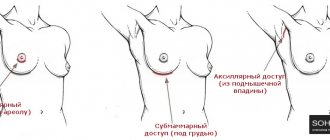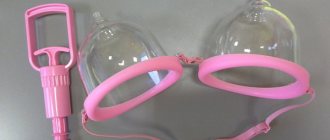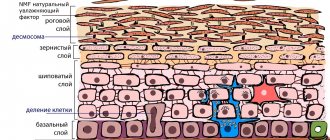Plastic surgery for breast augmentation is a very popular and in-demand surgical procedure nowadays. With the help of enlargement (augmentation) mammoplasty, girls radically change their lives, they get rid of various complexes and shyness in communicating with the opposite sex.
The operation is aimed at improving the shape and volume of the mammary gland, creating visible naturalness, elasticity and fit. Most patients decide to enlarge their breasts if neither massage, creams, nor special exercises can solve the problem.
The essence of the procedure
Augmentation is a word of Latin origin.
And it means strengthening or increasing. In simple terms, the essence of all operations of this kind comes down to increasing the volume of the breast, and, if necessary, simultaneous correction of its shape. This result is achieved by installing implants or prostheses. Today there are many varieties of them. Only a doctor can choose the correct form. The patient is allowed to choose the material and manufacturer. The cost of the entire operation largely depends on this.
Indications and contraindications
There are few medical indications for augmentation mammoplasty. These are congenital defects, or underdevelopment of the mammary glands, or prosthetics after a mastectomy. Almost 90% of all operations are performed solely for aesthetic purposes at the request of the patients.
But there are plenty of contraindications:
- age under 18 years;
- exacerbation of chronic diseases;
- poor blood clotting;
- active viruses and infections;
- any diseases of the mammary glands;
- significant excess weight;
- cardiovascular failure;
- disorders of the liver and/or kidneys;
- significant hormonal imbalance;
- serious mental problems.
It is worth thinking carefully about nulliparous women who plan to have children in the near future. Some types of prosthetics may interfere with breastfeeding. And the bust will still change its shape after it. So it might be better to wait a few years for surgery.
Composition of implants
Today, the latest generation of silicone implants are widely used when performing augmentation mammoplasty. They contain a dense or soft gel enclosed in a silicone shell. They are highly durable, have a neutral effect on the body, and are not prone to wrinkling. In addition, to the touch they are no different from natural breasts, forming a beautiful, soft relief. In the event of a rupture, which occurs quite rarely, the gel does not spill out of the capsule, maintaining its shape, so the damage is difficult to detect - an ultrasound or MRI will be required.
Implants vary in shape: round, teardrop-shaped (anatomical) and asymmetrical. In each specific case, the surgeon will select the most suitable model depending on individual indications and body structure features.
Preparatory stage
Any external invasion of the body does not pass without leaving a trace. And surgery on such a delicate organ as the breast should be performed only by the hands of an experienced specialist, in good conditions and in the complete absence of contraindications.
In order to verify this, it is necessary immediately after the initial consultation to undergo a fairly thorough examination, including:
- coagulogram - blood test for clotting;
- tests for HIV and syphilis, the presence of which can lead to unpredictable consequences;
- blood biochemistry, which allows us to identify abnormalities in the functioning of internal organs;
- a general urinalysis to assess kidney health;
- an electrocardiogram to rule out heart failure;
- mammography and ultrasound (and sometimes CT) of the mammary glands;
- chest x-ray to rule out tuberculosis, chronic bronchitis and pneumonia.
One month before surgery, stop taking oral contraceptives and any hormone-containing medications. In 10-14 days you will have to quit smoking, give up alcohol completely and reduce your coffee consumption as much as possible.
Mastopexy is performed only under general anesthesia, so it is done on an empty stomach. You should not drink 3-4 hours before surgery.
How is augmentation mammoplasty performed?
Before visiting the surgeon, a thorough examination of the patient is carried out. During the consultation, the specialist explains in detail the risks and rules that must be followed during the rehabilitation period. In addition to the surgeon, you will have to visit a therapist, mammologist, gynecologist, and undergo a number of tests and medical studies.
The operation consists of three stages. In the first, an incision is made in the skin, in the second, an implant is installed, and in the third, the wound is sutured.
Depending on the physiological characteristics and constitution of the body, the surgeon chooses one of three access options for placement:
- Periareolar - along the lower circle of the areola of the breast. This incision allows for a slight tightening and adjustment of the shape and size of the areolas.
- Axillary (transaxillary) – in the area of the armpit. The advantages of this type are the absence of visible scars, but the procedure for installing endoprostheses is quite complex and requires a highly qualified doctor.
- Submammary - in the area of the inframammary fold. It is considered the safest, most versatile and low-traumatic access for augmentation mammoplasty, which does not affect glandular tissue. The postoperative scar is hidden by a fold.
In addition, there are three placement methods:
- Submuscular (directly under the pectoralis major muscle). Provides maximum preservation of the natural appearance of the mammary gland.
- Subglandular (in a pocket between glandular tissue and muscle). It allows you to best hide the prostheses, but the latter, in turn, become a little more noticeable and tangible.
- Subfascial (under the connective membrane). When using this method, the implants are best fixed, which prevents displacement.
Contraindications
- oncology;
- acute infections;
- diabetes and other endocrine diseases in the stage of decompensation;
- cardiovascular and circulatory diseases;
- period of pregnancy or breastfeeding;
- allergic reactions to silicone or other material used.
Postoperative period
The first day after augmentation mammoplasty, patients are often left under the supervision of doctors, pain syndromes being relieved with analgesics. 2-3 weeks after surgery, the resulting swelling subsides. The stitches are removed after 8-10 days (if they do not dissolve on their own).
For 1-3 months, depending on the individual specifics, you are required to wear special compression garments. During this period, there may be a feeling of hardening in the breast, which will soon pass when the implants are surrounded by a thin capsule of fibrous tissue. The final restoration of the mammary glands occurs six months after mammoplasty.
During rehabilitation, it is recommended not to subject the body to significant physical activity, to steam in baths and saunas, visit swimming pools, sunbathe on the beach and in solariums. If the post-operative recommendations of the specialist are properly followed, the process will go smoothly and without complications.
Since silicone implants are foreign to the body, there remains a small risk of capsular contracture - excessive growth of scar tissue around, which leads to deformation of the prosthesis and pain. A detailed preoperative study, the absence of contraindications and a high-quality operation will most likely help avoid this effect.
What you need to know
Those who care about their health should also think about the consequences. Any operation is extremely stressful for the whole body. And an implant, even the highest quality one, is a foreign body placed in it. And no one can accurately predict how the immune system will react to it. It is after breast prosthetics that various side effects and complications often occur.
Types of prostheses
Today, more than a hundred manufacturers are engaged in the production of prosthetics in the world. Among them there are reliable companies with an excellent reputation, but many Chinese implants have also appeared on the market. They are sold at a very attractive price, but often do not have all the necessary certificates and can cause a lot of trouble to their owner.
How natural the breast will look and how comfortable the patient will feel with it depends largely on the filler. They come in several types:
- Biogel. The most expensive, but very high quality. It is absolutely safe and in case of accidental damage to the prosthesis, it quickly dissolves in the soft tissues. Does not provoke rejection, does not contribute to the formation of contracture. The cost of such implants is almost twice as high as silicone ones.
- Silicone. At first it was simply injected into the chest, but over time it began to migrate or accumulate into a mass. Therefore, silicone is now enclosed in a capsule, which is given different sizes and shapes. Silicone prostheses are super popular because they represent the optimal combination of price and quality.
- Saline. They have their pros and cons. They are a full or partially saline filled chamber that can be easily inserted through a very small incision. If desired, liquid can be added or pumped out and thus adjust the dimensions. But saline implants are quite heavy, they get cold in the wind and cold weather, and they feel soft and very different from natural breast tissue.
Recently, two- and three-chamber implants have been used for reliability. This is really convenient - in case of accidental damage, only part of the gel will get under the skin. In addition, such prostheses hold their shape better and are more elastic.
Access methods
The surgeon can access the breast tissue in several ways. The most popular, simple and safe is the submammary one, in which the incision is made in the skin fold under the breast. It provides an excellent overview of the working field and makes it easy to install the implant in the desired location. But it has a significant drawback - even the neatest suture still does not dissolve without leaving a trace.
With circular access, the skin is incised along the line of the areola. If necessary, the pigmented tissue can be simultaneously reduced or adjusted to a perfectly round shape. Sometimes the incision is made only along the lower arch - this is quite enough for prosthetics. The stitches after such an operation are almost invisible.
The axillary approach requires the highest skill of the surgeon, who can damage large blood vessels or nerves with one careless movement. But no traces of breast surgery remain, so it is very popular, especially among young women with an active sex life and professional models.
At the initial consultation, the surgeon discusses with the patient all possible methods of performing the operation and shows her suitable prosthetic options. But he always leaves the final choice to himself, taking into account many other related factors.
Implant placement
Most patients believe that implants are installed under the breasts, something like push-up pads in a regular bra. But this is absolutely not true. It all depends on the initial condition of the bust, as well as the shape and size of the chosen prosthesis.
The implant can be placed:
- under glandular tissue;
- between the muscular fascia and the pectoral muscle;
- on the pectoral muscle.
It is never placed under the chest, since under the influence of gravity it will simply slide down over time.
Mastopexy
Often women turn to a plastic surgeon with a request not only to make their breasts larger, but also to perform a breast lift. In this case, augmentation mastopexy is used. It has several degrees of difficulty. With slight ptosis and good skin condition, it is quite enough to remove the excess flaps and everything will fall back into place.
But if the breasts have sagged significantly, age-related changes are visible on the skin, it is flabby and wrinkled, much more manipulation will have to be done. An approximate operation scheme in this case looks like this:
- An optimally shaped incision is made on the breast.
- Excess skin flaps are cut off.
- Soft tissues are redistributed.
- The nipple-areolar complex is transferred to the correct location.
- If necessary, correction of the nipple and areola is performed.
- The implant is installed.
- The skin is tightened with cosmetic stitches.
Such an operation can take up to three hours if no serious complications arise during its course.
Rehabilitation
After completion of the operation and suturing, the patient’s chest is tightened with a tight sterile bandage and sent to the intensive care ward, where a period of complete recovery from anesthesia takes place.
You should not lie on your back - this increases swelling and increases the risk of bleeding. The head of the bed is positioned so that the upper body is elevated.
If everything went well, there are no early complications and no significant increase in body temperature, the drainage is removed after a few hours and the patient can be sent home. There, for the next 2-3 days, it is advisable to remain in bed and get up only for short walks around the apartment.
Sutures must be treated daily with an antiseptic until they are completely healed. If they are not absorbable, then they are removed after about 10 days. By this time, most of the bruises and swelling have gone away, so you can already evaluate the preliminary result. But the breasts will finally take on a new shape by the end of the third month, and the implant will take up to a year to fully engraft.
Recovery Tips
The following recommendations will help speed up recovery and prevent the development of late complications:
- for the first two to three months it is better to wear comfortable shapewear;
- with the doctor’s permission, you should start doing regular breast massage;
- to improve skin condition, use high-quality lifting creams;
- you can drive only 2-3 weeks after surgery;
- active sports are banned for 3-4 months;
- you cannot visit the solarium, sauna and swimming pool for several weeks;
- Do not lift weights more than 2-3 kilograms for six months.
Until the stitches heal completely, you will have to give up sex. The rush of blood during sexual arousal and/or orgasm can cause postoperative bleeding.
Methods for installing implants
The choice of how plastic surgery will be performed is made by the surgeon based on data obtained from analyzes and preoperative studies, and a visual examination of the patient by the plastic surgeon. The choice of implant location is influenced by:
- location of the mammary gland on the chest wall: high, medium or low;
- breast thickness and elasticity;
- absence or presence of ptosis (sagging mammary glands);
- anatomical features of the chest muscles;
- various deformities of the ribs and chest;
- the presence of stretch marks and the area of their distribution.
During surgery, breast implants can be placed in the following ways:
- Submammary - under the mammary glands.
- Subpectoral - under the pectoralis major muscle.
Before the operation, he carefully selects the layer where the pockets for the implants will be formed. Possible location of the implant during breast augmentation:
- Under the mammary gland - subgladular method. This placement of the implant is used for dense and well-developed breast tissue. In addition, the elasticity of the skin is taken into account. In this case, the localization of the implant is under the tissue of the mammary glands, while the posterior surface is separated from the surface of the fascia of the pectoralis major muscle.
- Under the muscular fascia - subfascial method. During the operation, using this method, the fascia is peeled off from the large chest muscle, under which the implant is located. The fascia does not cover the implant sufficiently because it is a thin connecting plate.
- Under the pectoralis major muscle - submuscular method. In this case, a pocket for the implant is made under the major muscle of the chest. During the operation, the pectoralis major muscle is detached from the chest and partially dissected at its attachment to the ribs.
- Partially under the mammary gland and pectoralis major muscle - a combined method. In such a situation, you can observe the advantages of the listed methods. Often this method of operation is irreplaceable, especially with slight sagging of the breast.
Before the operation, the surgeon also decides which implants will be used. To do this, he makes a thorough inspection and measurements. Implants are selected taking into account the individual characteristics of the patient’s breast. The most popular today are silicone implants of anatomical shape. Manufacturers use gel or saline solution as a filler.
Mammoplasty procedure
The surgical operation lasts 1-3 hours. Anesthesia is carried out using general anesthesia. During the operation, the skin is cut and tissue is separated to form a pocket where the implant is subsequently placed. A necessary stage of the operation is the installation of drains through which the wound discharge is drained.
Next, the surgeon applies stitches. At the end, the patient is put on special compression garments, which must be worn for at least a month. After the operation, the patient is transferred to the observation ward. Most often, the discharge takes place the next day. After 1-2 weeks, the sutures are removed in a hospital setting.
Possible complications
Even a high-quality operation will not provide a complete guarantee that the patient will not experience complications. With augmentation mammoplasty without implants, they are less common: there is no risk of contracture formation, rejection of the prosthesis, or spreading of its contents in case of accidental damage to the capsule.
The consequences of careless actions of a doctor can be:
- extensive hematomas;
- loss of skin or nipple sensation;
- asymmetry of the mammary glands;
- seroma formation;
- swelling that does not go away for a long time.
Due to the fault of patients, sutures often come apart and wounds become infected. And nausea, vomiting and dizziness are common during recovery from anesthesia.
Introduction to Augmentation Mammoplasty (Breast Enlargement)
Back in 1760, the Swedish biologist Carl Linnaeus introduced the term “mammal,” and therefore having breasts, describing a group of living beings from a completely new angle for the world, describing qualities and forms that had previously been overlooked. Since then, women's breasts have haunted humanity (men, women and individuals who have not yet decided). The fashion for voluminous and beautiful forms, once on the Hollywood screen, gave rise to unprecedented interest and turned breasts from a useful (feeding) obscenity into the main fetish of humanity.
Rita Hayworth, starring in an advertisement in a negligee, became so popular that one of her photos was placed on the body of the atomic bomb dropped on Bikini Atoll in 1946. After which French fashion designer Louis Reard dubbed his first swimsuit a bikini, based on the memories of a photo with Rita, and not on a recorded fact. Topless models with luxurious busts began to appear in the first men's magazines (at that time there was no Maxim, Playboy, but Erotic, Night&Day, Kamera, etc.) completely delighted readers (more precisely, viewers) and made the owners of the magazines financially omnipotent, and printing (even then) was color and high quality. Large beautiful breasts in the 60s were increasingly shown in films, Sophia Loren, Gina Lollobrigida and of course Marilyn Monroe and turned actresses into sex symbols of the era.
However, not all girls were generously endowed by nature with the breasts of their dreams, but she provided them with a variety of forms and perseverance that ultimately influenced the entire industry, the name of which is plastic surgery!
The first implants were sea sponges, cow cartilage and paraffin, which very often (I can imagine how plastic surgeons felt then), became inflamed and led to the most tragic consequences. The first operations to inject liquid silicone (first tested in post-war Japan on strip girls) gave significantly better results and fewer complications, but the gel often migrated, changed shape, thickened and ultimately also led to inflammation, albeit a little delayed . In 1963, the Dow Chemical company released the first gel-filled implants, and the manic attachment of women of that time to large sizes allowed the development of many surgical techniques for their installation (mainly using inframammary access-under the gland). The fashion for super-busts has led to manufacturers releasing super-sized implants of 1000cc, 2000cc and even 3000cc. Bizarre super-talentedness required monstrous will and tolerance from girls, but no matter how much willpower they possessed, such breasts often became infected and led to intractable fistulas and skin tears. Things have gone too far and fashion, as a mathematically verified and spatially dynamic concept, has changed its direction and set a course for the naturalness of shapes and sizes, and the word gifted has returned to its true, genetically extraordinary meaning.
The possibilities of augmentation mammoplasty today are limited by the anatomy of each patient and the choice of technique. An extremely balanced approach to choosing a particular technique allows you to achieve the desired result in the least traumatic way. The most commonly used implants are filled with silicone gel, as they are characterized by the greatest durability and strength. Manufacturers (Mentor, McGan, etc.) produce implants of different shapes (round, teardrop-shaped) and sizes. Implant tables are publicly available to Internet users and are listed on manufacturers’ websites, although at first acquaintance they smack of mystery and mysticism, and it seems as if a special formula is required to decipher them, but nevertheless, modern patients (for the most part) eagerly get acquainted with them and boldly discuss them on all kinds of forums.
Implant replacement
If the installation of the implant is done correctly and it is of high quality, then it can remain in place for the rest of your life. But quite often patients end up on the operating table again. The reason for this is usually:
- desire to change the shape or size of the breast again;
- replacing an outdated implant with a better and more modern one;
- the need for repeated correction due to age-related changes;
- severe breast deformation after childbirth and breastfeeding;
- significant displacement or palpation of the implant;
- rupture of the shell and loss of shape by the prosthesis.
Typically, surgeons try to make new incisions in place of old ones, unless rough scar tissue prevents this. Rehabilitation after repeat mammoplasty lasts a little longer, but if the patient behaves correctly, it does not cause much inconvenience.
When is augmentation mammoplasty indicated?
Breast augmentation surgery is indicated for patients in the following cases:
- breast asymmetry;
- ptosis (drooping) of the mammary glands;
- age-related changes in the breasts that led to bust deformation;
- the size of the mammary glands is not proportional to the overall contours of the figure;
- the patient has no mammary glands;
- bust deformation associated with hormonal changes during pregnancy and lactation;
- underdevelopment of the mammary glands;
- breast reconstruction after mastectomy.
Reviews and results
Reviews from most patients after mammoplasty are simply enthusiastic. Still, the size and shape of the breasts are important not only for men, but also for overall female self-esteem. The results that can be seen in the photo after breast augmentation with prostheses on one side are simply amazing. It completely eliminates asymmetry and makes the bust perfectly beautiful.
The cost of mammoplasty starts from 50 thousand rubles and can reach several hundred thousand. It all depends on the qualifications of the surgeon, the level of the clinic, the complexity of the operation, the type of implants and their manufacturer, and many other factors. In the capital, you will have to pay twice or even three times more for the same procedure than in a provincial clinic, although the specialists there may be no worse.
Author: Anna Alexandrova
The nuances of augmentation mammoplasty
Breast augmentation surgery lasts 1.5-2 hours. If a complex augmentation mastopexy (breast lift and enlargement) is required, the duration of the procedure increases to 2.5 – 3 hours. Augmentation mammoplasty is performed under general anesthesia.
The first results after breast augmentation can be assessed after 6-9 months, when the swelling has completely subsided and the stitches and scars from the operation have healed. The duration of the rehabilitation period is 1-2 months, during which it is necessary to follow the recommendations of the plastic surgeon:
- compression garments should be worn;
- you cannot visit baths, saunas or take hot baths;
- You should not sunbathe in the sun or in a solarium;
- It is recommended to refrain from physical activity and sleeping on your stomach.
The information on the site was personally verified by plastic surgeon Maxim Aleksandrovich Osin; if you have any additional questions, call the phone number listed on the site.











